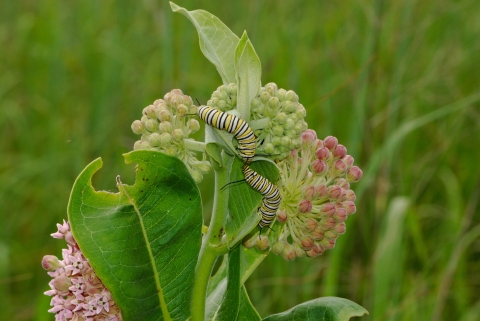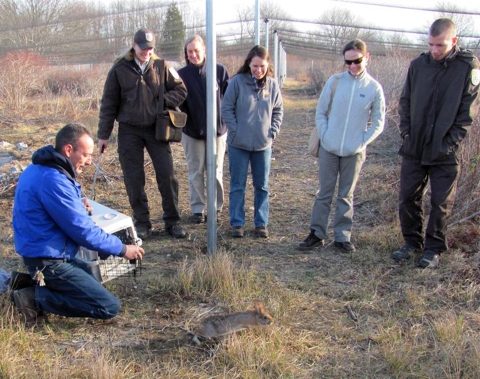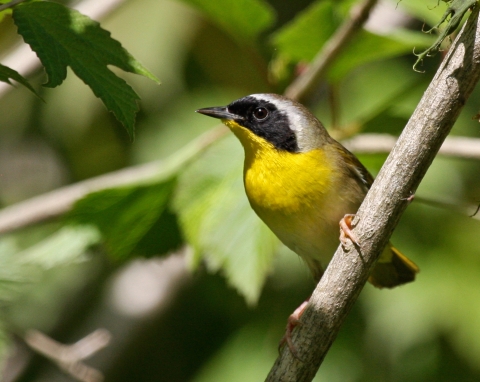What We Do
Wildlife conservation is at the heart of the National Wildlife Refuge System. It drives everything on U.S. Fish and Wildlife Service lands and waters managed within the Refuge System, from the purposes for which a national wildlife refuge national wildlife refuge
A national wildlife refuge is typically a contiguous area of land and water managed by the U.S. Fish and Wildlife Service for the conservation and, where appropriate, restoration of fish, wildlife and plant resources and their habitats for the benefit of present and future generations of Americans.
Learn more about national wildlife refuge is established to the recreational activities offered to the resource management tools used. Using conservation best practices, the Refuge System manages Service lands and waters to help ensure the survival of native wildlife species.
Management and Conservation
Refuges deploy a host of scientifically sound management tools to address biological challenges. These tools span active water management to wilderness character monitoring, all aimed at ensuring a balanced conservation approach to benefit both wildlife and people. At this field station our conservation tool box includes: Planning - Comprehensive Conservation Plans, Habitat Restoration, Climate Resilience, Conservation Easements, Compatibility Determinations, Education and Outreach, Fire Management, Invasive Species Control, Inventory and Monitoring, Land Acquisition, Law Enforcement, Pesticide Management, and Wilderness Character Monitoring.
Habitat / Invasive Species Management
The refuge staff continues to work on an Adaptive Resource Management shrub restoration project that focuses on providing high quality habitat for migratory landbirds and New England Cottontail, ( a former a candidate species). This project involves four refuges (Rachel Carson, Great Meadows, Parker River, and Ninigret). Extensive planning was involved in developing the monitoring protocols for the vegetative community as well as the wildlife of interest. Long term vegetative plots will be established to monitor the composition and structure structure
Something temporarily or permanently constructed, built, or placed; and constructed of natural or manufactured parts including, but not limited to, a building, shed, cabin, porch, bridge, walkway, stair steps, sign, landing, platform, dock, rack, fence, telecommunication device, antennae, fish cleaning table, satellite dish/mount, or well head.
Learn more about structure of the plant community.
Volunteers continue to monitor invasive plants encroaching on the old runways. This is primarily focused on Autumn Olive, Japanese honeysuckle, asian bittersweet, and black swallow-wort and is an important aspect of the restoration as native plants are colonizing and gaining the advantage.
Monitoring and Surveys – Resources of Concern
New England Cottontail
During the winter we will be collecting pellets for DNA testing at UNH as well as to support development of another potential technique being investigated at Patuxent. We hope to have a better idea of the distribution and abundance of this species on Ninigret where they were documented back in 2006. Using pellets for DNA analysis (as developed in the northern part of the range) has proved difficult in recent years when snowfall has been minimal, so if we continue to have difficulty collecting samples we will be looking to develop additional techniques for detecting and monitoring this species.
Migrant Landbirds
On September 1, 2008 we initiated a fall banding station at the Salt Ponds unit of Ninigret NWR to document the diversity and abundance of fall migrating landbirds. A total of 17 net lanes were constructed within a 20
acre portion of the refuge. Approximately 14 acres is dominated by mature shrub and 6 acres is regenerating runway comprised almost exclusively of northern Bayberry. We opened between 5 to13 nets 4-5 days per week through October 31, 2008. The number of open nets depended on the weather and capture rate. We banded a total of 1079 birds of 51 species.
Our Services
At this field station we offer the following public services:
Support to buy Sandy Point Island passes, Sachuest Point Night-time Fishing Permits and Youth Hunt Permits at rhodeislandpermits.recaccess.com.
Please call 401.364.9124 if you have any questions while purchasing passes or permits.
Law Enforcement
Law Enforcement
Refuge law enforcement patrol the area during and after hours.
Refuge Office of Law Enforcement: 401-364-9124
Injured wildlife can be reported to the Wildlife Rehabilitators Association of Rhode Island at 401-294-6363.




